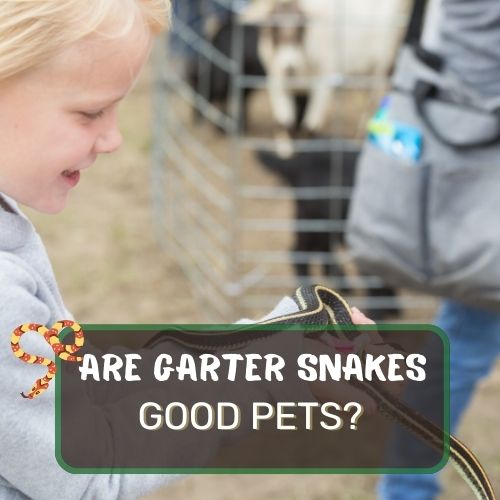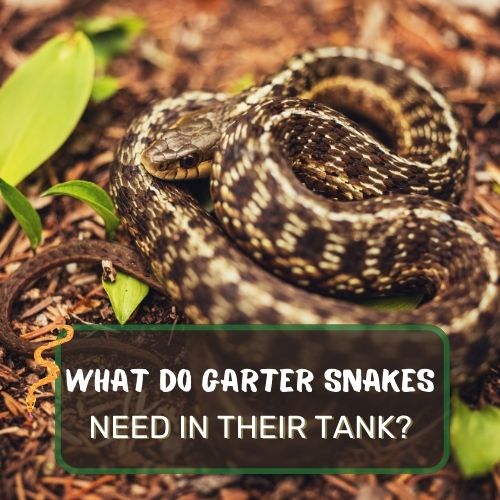Imagine a serene day in the garden when suddenly, your dog has a curious encounter with a slithering garter snake. Panic ensues, questions whirl in your mind: “Can a garter snake bite hurt my dog?”
Relax, we’ve got you covered.
Garter snake bites are typically mild and don’t pose a significant threat to dogs. While a bite might cause slight swelling or redness due to their weak venom, severe reactions are rare. However, always monitor your dog for any unusual behavior after a snake encounter.
In this comprehensive guide, we’ll explore the potential dangers of garter snake bites, how to identify if your pup’s been bitten, and proactive steps to prevent future encounters.
Plus, we’ll dive into the canine psyche to understand why dogs are so intrigued by these reptilian neighbors. Ready to unravel the mystery? Let’s get started!
Table of Contents
- 1 What are the dangers of Garter Snake bites For Dogs?
- 2 How can you tell if your dog has been bitten by a Garter Snake?
- 3 What should you do if your dog is bitten by a Garter Snake?
- 4 How can you prevent your dog from being bitten by a Garter Snake?
- 5 Curious Canines: Why Do Dogs Approach Snakes?
- 6 Final Word
- 7 FAQ
What are the dangers of Garter Snake bites For Dogs?

Let’s take a deep dive into understanding the potential dangers and risks.
Composition of garter snake venom
First, a splash of science! Garter snakes are indeed mildly venomous. Now, I know what you might be thinking: “Venomous?! I thought they were harmless!”
Well, their venom is quite weak and not typically a concern for humans. Their venom contains a mix of enzymes, some of which can break down cells and aid in digestion.
In the grand hierarchy of snake venom, the garter’s venom sits quite low in terms of potency. Think of it as the decaf coffee of the snake venom world.
Difference between venom and saliva
Alright, before we all get rattled (pun intended), let’s understand the difference between venom and saliva. Imagine this: you’re enjoying a cheeseburger. Your saliva helps you break down that food. Similarly, a snake’s saliva aids in digestion.
Now, venom is the “extra spice” — a specialized type of saliva that has evolved in some snakes to immobilize or digest prey. It’s like comparing plain water to hot sauce. Both are liquids, but one has a bit more kick! While all snakes have saliva, not all have venom.
And in the case of the garter snake, it’s a very mild kind of “hot sauce.”
How garter snake venom affects larger animals like dogs
Let’s set a scene. Fido is playing in the garden, and suddenly he’s nose to nose with a garter snake. The snake, feeling threatened, decides to give Fido a tiny nip. What happens next?
Given their venom’s low potency, the effect on larger animals like dogs is usually minimal. However, no two dogs are the same. A bite might result in slight swelling, redness, or a minor allergic reaction in some sensitive pups.
But, for the vast majority, it’s more about the surprise of the bite than any real harm.
Picture it like this: if the garter snake’s venom was a spicy pepper, it might not even make you break a sweat. For dogs, the reaction is similar. A bit of discomfort, maybe some intrigue about the tiny creature that just gave them a nip, but no severe danger in most cases.

How can you tell if your dog has been bitten by a Garter Snake?
So, if you live in an area where garter snakes abound, you might wonder how to tell if your pooch has had a surprise encounter with one. Let’s dive into the telltale signs!
Immediate symptoms
Imagine you’re at a picnic and a bee stings you. Ouch! Your immediate reaction might be a yelp of surprise. Dogs are no different. If bitten, they might let out a yelp, whimper, or show sudden distress. Their immediate response is usually due to the surprise more than the pain.
Possible allergic reactions
You know how some people can’t even look at a peanut without sneezing? Dogs, like humans, can have allergies too. While it’s rare, some dogs might show an allergic reaction to a garter snake bite.
This can include excessive drooling, difficulty breathing, or even vomiting. If you notice these symptoms, it’s vet time, pronto!
Localized swelling or redness
Garter snake bites are like little pinpricks, often causing slight swelling or redness around the bite area. It might look like two tiny puncture marks surrounded by a reddish halo. This is the venom and saliva doing its mild dance.
Behavioral changes in dogs
Post-bite, your dog might act a bit… off. They could become unusually timid, frequently lick the affected area, or display signs of discomfort. Keeping an eye on their behavior is crucial to ensuring they’re not having a more severe reaction.

What should you do if your dog is bitten by a Garter Snake?
Alright, the moment has come. You’ve spotted the signs, and yep, it seems like a garter snake has given your dog a tiny tattoo. So, what’s next?
Step 1: Keep calm and soothe your dog
First things first. Breathe! Panicking won’t help anyone, especially your dog. Gently soothe and comfort them. Remember, they’re probably more scared than hurt.
Step 2: Inspect the bite area
Find a well-lit spot and get a good look at the bite. Those puncture marks will give you a clearer idea of the situation. Garter snake bites are typically harmless, but it’s essential to ensure it wasn’t another snake type.
Step 3: Clean the wound
Grab some warm water, mild soap, and gently clean the bite area. This helps prevent any infections and soothes the skin. A clean wound is a happy wound!
Step 4: When to call the vet?
While garter snake bites are typically low on the danger scale, it’s always better to be safe. If you notice swelling that doesn’t subside, any allergic reactions, or if your dog seems in pain hours after the bite, give your vet a ring.
They’ll guide you on the best next steps.
Remember, dogs and garter snakes usually coexist peacefully. But if an encounter does happen, being informed and prepared will ensure your furry buddy stays happy and healthy.

How can you prevent your dog from being bitten by a Garter Snake?
Prevention is better than cure, right? Let’s explore some proactive measures to ensure your pup and garter snakes maintain their respective boundaries.
Keeping your backyard free from tall grasses and hiding spots
Garter snakes love their privacy. Tall grasses, heaps of leaves, or unkempt shrubs are like luxury hotels for them. Regular lawn maintenance, like mowing and clearing out potential hiding spots, reduces the chance of these slithery tenants setting up shop in your yard.
Training your dog to avoid snakes
“Doggie, no touchy!” Training your dog to steer clear of snakes is invaluable. With consistent commands and rewards, you can teach your pup to keep a safe distance when they spot a snake.
Keeping your dog on a leash in snake-prone areas
If you’re out and about in areas known for snake sightings, keep your curious canine on a leash. It’s a simple way to control and protect them from potential snake encounters.
Educate yourself on local snake species
Knowledge is power. Familiarize yourself with the types of snakes in your locality. It’ll help you differentiate between the harmless garter snake and other potentially more dangerous species.

Curious Canines: Why Do Dogs Approach Snakes?
Now, let’s delve into a fascinating question. Why, oh why, does your intelligent canine buddy feel the urge to say hello to a snake?
The natural instincts of dogs
Back in the day, before they became our cuddle buddies, dogs were wild creatures. Their instincts drove them to investigate potential threats or prey. That ancestral DNA still lingers. A moving snake can trigger that age-old predatory drive.
Dogs and their tendency to explore
Every dog owner knows this — dogs are the world’s most curious creatures. They love to sniff, explore, and investigate every nook and cranny. A slithering garter snake? Well, that’s just another intriguing puzzle in their adventurous day!
Snakes: A moving target or a threat?
To a dog, a snake might be seen as a moving toy or a potential threat. Their approach can vary. Some dogs might bark, signaling danger. Others might try to play, not realizing the snake isn’t in the mood for games.
So, when your dog dashes towards a snake, it’s a blend of curiosity, instinct, and perhaps a touch of bravery. As their guardians, it’s our job to ensure their safety during these wild encounters.

Final Word
You’ve journeyed through the realm of garter snakes and their potential interactions with dogs. We’ve learned that while garter snake bites can be unsettling, they’re typically mild for our furry friends.
By recognizing signs, taking preventive measures, and understanding your dog’s natural instincts, you’re well-equipped to handle any surprise snake encounters.
Remember, knowledge is power. With this newfound wisdom, you can ensure a safe environment for both your dog and the local wildlife. Stay curious and stay informed!
FAQ
How does a dog act if bitten by a snake?
A dog bitten by a snake might yelp or show sudden distress due to the surprise. Post-bite, the dog could exhibit localized swelling or redness around the bite area, continuously lick the affected spot, or display behavioral changes such as becoming unusually timid or showing signs of discomfort.
Are garter snakes safe around dogs?
Generally, garter snakes are considered safe around dogs. While they are mildly venomous, their venom is weak and typically doesn’t pose a significant threat to larger animals like dogs. Most reactions to a garter snake bite in dogs are mild, such as slight swelling or redness.
Can dogs sense snakes?
Dogs have keen senses and can often detect the presence of snakes through smell or sound. Their acute hearing can pick up the rustling of a snake moving through the grass, and their powerful sense of smell might detect a snake’s presence even if it’s hidden.
How long does it take for a snake bite to hurt a dog?
The reaction to a snake bite can vary based on the type of snake. For garter snake bites, any discomfort or reaction usually appears quickly, within minutes to a couple of hours. For venomous snakes, the symptoms can manifest rapidly and can be more severe. Always consult a vet if unsure about the bite’s origin or if the dog shows signs of distress.




0 Comments